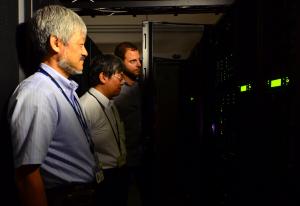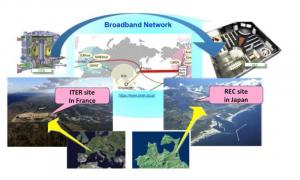ITER to Japan at breakneck speed
When ITER starts running plasma shots, operators in the control room on site won't be the only ones processing the huge amount of data collected by the tokamak's diagnostics systems. Ten thousand kilometres from ITER, in Japan's Remote Experimentation Centre (REC), other operators will be crunching the same numbers. Problem: how to transfer data as fast as possible to a site half a world away?
The Remote Experimentation Centre¹, a duplicate of ITER's control room on site, will enable scientists in Japan to remotely participate in ITER experiments. By storing the experimental data that will accumulate over time, it will make a massive database instantly accessible to researchers.
The achievement was made possible by the implementation of a super-fast protocol, the Massively Multi-Connection File Transfer Protocol (MMCFTP) developed by Japan's National Institute of Informatics. In parallel, in collaboration with the pan-European network for the research and education community (GÉANT) and its French equivalent RENATER, the National Institute of Informatics established a dedicated virtual network—private, stable and highly secure—using the newly established direct high-speed link between Europe and Japan. (Thanks to this new link, the physical distance that data needs to travel is reduced by one-third.)



